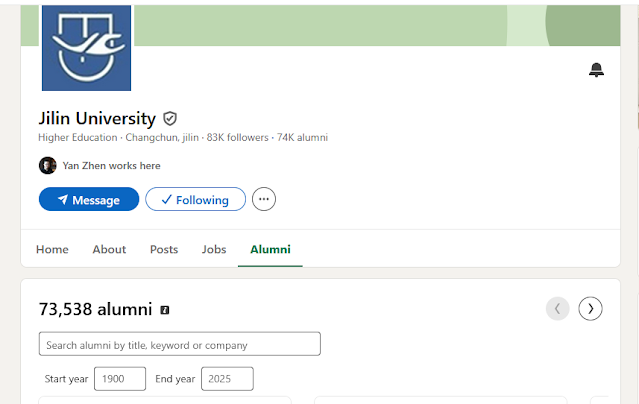Digital Fieldwork: How I Built a LinkedIn Database for My PhD on PNG–China Educational Exchanges
In conducting a nationwide and internationally scoped PhD project, one of the most practical challenges is reaching participants who are geographically scattered, institutionally diverse, and sometimes unknown to the researcher at the outset. This was the case for my study on the influence of China’s HEEPs on PNG–China relations. While I had conceptualized seven survey groups—including CGSP students, alumni, and participants in Chinese Language and Public Sector Training Programs—I needed a reliable and ethical way to identify and engage them. This is where LinkedIn became a vital tool in my research process.
To build trust and visibility, I updated my LinkedIn profile to clearly identify myself as a PhD candidate at Divine Word University. I also added a concise summary of my research focus, uploaded a graduation photo from Jilin University, and used an AI-generated banner image symbolizing PNG–China educational cooperation. This visual storytelling helped signal my credibility and purpose to potential participants before I even sent a connection request.
My outreach strategy was twofold. First, I identified PNG students and alumni featured in media reports or known within academic and policy circles. I searched for them by name, sent a connection request without a message, and only followed up with a direct message containing my survey link and research details after they accepted. This approach respected their boundaries while still initiating professional contact.
Second, I took a structured institutional approach. I used a list of 279 Chinese universities that admit international students under the Chinese Government Scholarship, published by China Admissions. I searched for each of these universities on LinkedIn, accessed the Alumni tab, and filtered for users who listed Papua New Guinea in their education or location history. While time-consuming, this strategy proved highly effective in uncovering both recent graduates and long-standing alumni.
To manage the process, I maintained a detailed spreadsheet with names, LinkedIn URLs, likely group classification (e.g., CGSP, CLP, PSTP), and response status. As of July 2025, I have sent out 191 direct message invitations to individuals who accepted my connection requests. Out of these, 108 participants completed the survey, while 83 are yet to complete it. Another 137 individuals were sent connection requests but have not yet accepted, meaning they have not received any follow-up message. This brings the total database to 328 individuals identified and tracked for participation.
Since survey responses are anonymous, I’ve encouraged participants to notify me if they decline to take part, helping me keep my tracking records updated and ethical. All messaging emphasizes that participation is voluntary, anonymous, and ethically approved under the Divine Word University research ethics guideline.
This method of digital recruitment mirrors the architecture of my survey, which was built around seven key participant groups. It has also provided broader insights into how Pacific researchers can use free and accessible digital tools to conduct fieldwork with hard-to-reach populations. LinkedIn, in this case, became not just a social platform but a research infrastructure.
To everyone who has responded, shared the link, or helped connect me with others—thank you. Your engagement is helping build a research project that reflects the real-life experience of PNG students and alumni in China, and your stories are helping shape future education policy, one response at a time.

Comments
Post a Comment